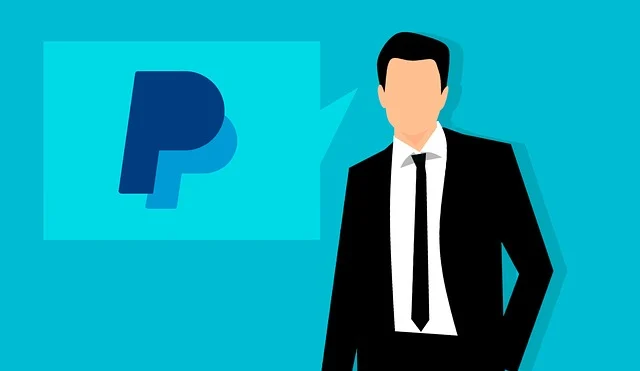PayPal’s trajectory as a leading digital payment platform has been marked not only by remarkable successes but also by significant challenges. As the company has evolved, it has encountered various obstacles ranging from competition to regulatory scrutiny. This chapter delves into the key challenges PayPal has faced, how it has responded, and the lessons learned that have shaped its resilience and innovation.
1. The Competitive Landscape
From its inception, PayPal has operated in a highly competitive environment. The rise of digital payments has led to the emergence of numerous competitors, ranging from traditional banks to fintech startups. As new players entered the market, PayPal had to continuously innovate to maintain its competitive edge.
A. Emergence of Fintech Competitors
In the early 2000s, PayPal faced competition from emerging fintech companies that offered alternative payment solutions. Startups such as Square and Stripe began to gain traction, appealing to merchants with user-friendly interfaces and lower fees. This competition prompted PayPal to reevaluate its pricing structure and service offerings to remain attractive to both consumers and merchants.
To combat this, PayPal implemented strategic initiatives to enhance its value proposition. The company revamped its user interface, streamlined the payment process, and introduced new features that catered to the evolving needs of users. By focusing on customer experience and leveraging its established brand, PayPal managed to retain a significant market share despite increased competition.
B. Global Giants Entering the Space
As PayPal established itself as a leader in digital payments, global giants like Amazon and Apple began to explore payment solutions of their own. The entry of these well-resourced companies posed a significant threat to PayPal’s market dominance. To address this challenge, PayPal expanded its partnerships with major retailers and e-commerce platforms, ensuring its presence across various online shopping ecosystems.
Additionally, PayPal invested in marketing campaigns to reinforce its brand identity as a trusted payment provider. The company emphasized security, convenience, and user-friendly features to differentiate itself from newcomers. By cultivating strong relationships with merchants and consumers, PayPal solidified its position in the competitive landscape.
2. Navigating Regulatory Scrutiny
As a leader in the financial technology sector, PayPal has faced ongoing regulatory scrutiny from various governments and financial institutions. The evolving nature of digital payments has prompted regulators to reevaluate existing frameworks, creating uncertainty for companies like PayPal.
A. Compliance Challenges
PayPal’s global operations necessitate compliance with a myriad of regulations across different countries. Adapting to diverse regulatory environments has been a complex task, requiring substantial resources and expertise. From anti-money laundering (AML) requirements to data protection laws, PayPal has invested in robust compliance measures to mitigate risks.
The company has proactively engaged with regulators to ensure transparency and build trust. By establishing dedicated compliance teams and fostering open communication, PayPal has navigated regulatory challenges while maintaining its commitment to user safety and security.
B. Data Privacy Concerns
In an era of heightened awareness around data privacy, PayPal has faced scrutiny regarding its handling of user information. Concerns about data breaches and unauthorized access have led to calls for stricter regulations on data protection.
To address these challenges, PayPal has prioritized data security and transparency. The company has implemented advanced encryption technologies and robust authentication measures to safeguard user information. By emphasizing its commitment to privacy and security, PayPal has worked to reassure users and regulators alike.
3. Adapting to Market Changes
The financial technology landscape is in a constant state of flux, with emerging trends and technologies shaping consumer behavior and expectations. PayPal has had to remain agile in response to these market changes to stay relevant.
A. The Shift to Mobile Payments
The rise of smartphones and mobile apps has transformed the way consumers engage with payments. As mobile payment adoption surged, PayPal recognized the need to enhance its mobile offerings. The company invested in developing a robust mobile app that provides users with a seamless payment experience.
By incorporating features such as mobile wallets, QR code payments, and in-app purchases, PayPal adapted to the growing demand for mobile solutions. The company also collaborated with merchants to integrate mobile payment options, ensuring that users could transact conveniently on their preferred devices.
B. E-commerce Growth and Pandemic Response
The COVID-19 pandemic accelerated the shift to online shopping and digital payments, presenting both challenges and opportunities for PayPal. As brick-and-mortar businesses faced closures, many retailers turned to e-commerce to sustain operations. PayPal recognized the urgent need to support merchants during this challenging time.
In response, PayPal introduced initiatives to help businesses transition to online sales. This included fee waivers for certain transactions, access to funding through PayPal Working Capital, and enhanced resources for digital marketing. By providing support to struggling merchants, PayPal not only strengthened its relationships but also positioned itself as a partner in resilience during a crisis.
4. Embracing Innovation and Change
Innovation has been a cornerstone of PayPal’s success, allowing the company to adapt to challenges and seize new opportunities. By fostering a culture of innovation, PayPal has remained at the forefront of the digital payments revolution.
A. Investing in Technology and R&D
To address evolving challenges, PayPal has consistently invested in research and development (R&D). The company has explored emerging technologies such as blockchain, artificial intelligence, and machine learning to enhance its services.
For instance, PayPal’s exploration of blockchain technology reflects its commitment to staying ahead of the curve. By leveraging the potential of decentralized ledgers, PayPal aims to improve transaction speed, security, and transparency. This proactive approach to technology ensures that PayPal can adapt to changing market demands and user expectations.
B. Fostering a Culture of Agility
PayPal’s ability to respond to challenges is also rooted in its organizational culture. The company promotes a culture of agility, encouraging employees to embrace change and think creatively. This mindset enables PayPal to pivot quickly in response to market shifts and emerging trends.
Through cross-functional collaboration and a focus on continuous improvement, PayPal empowers its teams to experiment with new ideas and solutions. This culture of innovation has been instrumental in helping PayPal navigate challenges and maintain its position as a leader in the fintech space.
5. Learning from Setbacks
While PayPal has enjoyed significant success, it has also experienced setbacks along the way. These challenges have provided valuable lessons that have shaped the company’s approach to future endeavors.
A. Understanding User Needs
One notable lesson for PayPal has been the importance of understanding user needs and preferences. Early in its journey, the company faced criticism for its customer service and user experience. Recognizing the need for improvement, PayPal invested in enhancing customer support and refining its platform.
By actively seeking user feedback and conducting market research, PayPal has been able to tailor its offerings to better meet the expectations of its diverse user base. This commitment to user-centric design has resulted in improved satisfaction and loyalty among customers.
B. Resilience in the Face of Adversity
PayPal’s journey has underscored the importance of resilience in the face of adversity. The company has encountered obstacles ranging from regulatory hurdles to intense competition, yet it has consistently emerged stronger.
By approaching challenges with a growth mindset and a willingness to learn, PayPal has demonstrated that setbacks can serve as catalysts for innovation and improvement. This resilience has been a defining characteristic of PayPal’s journey, allowing the company to thrive in a dynamic and competitive environment.
Conclusion: A Path Forward
PayPal’s journey through adversity has shaped its identity as a leader in the digital payments landscape. The company’s ability to navigate challenges, embrace innovation, and prioritize user needs has been instrumental in its success.
As PayPal looks to the future, it remains committed to overcoming obstacles and adapting to the ever-changing financial technology landscape. By learning from past experiences and fostering a culture of resilience, PayPal is poised to continue its legacy as a trusted partner in digital payments, empowering individuals and businesses worldwide.
Through strategic initiatives, technological advancements, and a focus on social responsibility, PayPal aims to redefine how people interact with money, making financial services accessible, secure, and user-friendly for all.






